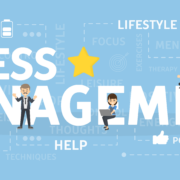You Weren’t Born with It: Learning to Manage Others
You Weren’t Born with It: Learning to Manage Others
Well done! You now have one of the most important jobs out there, managing a team! This is an important position in a company because good managers—or the lack thereof—can make or break a business. If you succeed in your position and your team meets goals and fulfills expectations, you’ve succeeded with arguably one of the toughest jobs out there. Not many have what it takes—the secret sauce, if you will—but there’s more to being a good manager than just talent. Contrary to what some may think, few are born with it. Time, hard work, and discipline are required to get all the elements of the job right.
Different Focus, Different Skills
A managerial role often entails a marked shift from past work life. You are no longer focused exclusively on improving your own performance. Rather, your focus shifts to helping members of your team shine at theirs. This responsibility to support and manage your team requires you to develop a new set of skills. As a manager, you will spend a lot of time communicating, meeting with company leadership, mentoring, setting goals and identifying the strengths and skills of your team members. Did we mention communication? This is a big one. Learn to do it well because a lot depends on getting it right. In general, some of the most important skills you can bring to the table come together in a managerial role.
The Well-Respected Team Lead
As a leader within the organization, you are immediately held to an unspoken standard to act in a way befitting the title. A manager needs to set an example, step up to challenging circumstances and maintain order with a clear head and steady hand. Of course, you may mess up and make the occasional mistake. Go ahead and share your professional challenges with your team now and then; a little honest humility can make you a more empathetic manager—one who is working to improve personal performance just like everyone else on the team.
Nothing Useful About Ambiguity: Be Clear About Expectations
Your team needs to understand your expectations, which is why—again—communication is key. Be specific, be exact and be crystal clear about the high-quality work you expect and when you expect it. Project outcomes or directives delivered in confusing or excessively general terms can send a project off the rails in a heartbeat.
Beware the Evil Twin: Micromanagement
Early on, spend time reviewing standard work processes and procedures with your team. Keep in mind, however, that when you articulate desired outcomes for a specific project—ideally with plenty of detail—you are not dictating how to arrive at those outcomes. For a variety of reasons, you may want to get down in the weeds and take over some of your team’s work. Don’t do it. This is a sure-fire way to becoming a micromanager. Doing the work of your team communicates a lack of trust and stirs up bad feelings. Remind yourself that members of your team have different methods of getting the work done. Step aside and let them do it.
Caveat: But don’t become so detached (for fear of micromanaging) that you lose track of your team’s progress. As a manager, you always need to know what is going on, how a project is progressing and whether you’re on course to meet project goals. Obviously if you notice a problem or recurring pattern, you need to get involved ASAP. More on this below.
Strength in Diverse Skill Sets
Good managers know that people have different skill sets and different approaches to work—and life, for that matter. As one expert suggests, manage your team as if you were playing a thoughtful game of chess. As you may know, in chess the player learns to skillfully use the characteristics and unique strengths of each piece to execute a strategy. Familiarize yourself with the skills of your individual team members in a similar manner and consider different strengths as you assign work projects. Note how team performance changes in different circumstances and adjust accordingly. Appreciating unique skill sets can lead to success on multiple levels—both for individual team members who feel valued for their talents, and for the company’s overall mission as well.
The Value of Frequent Check-ins
A manager’s most important tool is honest and direct communication. If you’ve developed a good working relationship with each team member, your team will know that even if some criticism is communicated, it’s coming from a desire to help. Frequent check-ins are useful to swiftly address a problem or check project status, but these meetings are also a chance to get to know personalities and learn something about an employee’s professional goals. Always try to help members of your team develop new capabilities and grow in ways that are personally and professionally fulfilling. Bottom line: Guide and lead your team, but also cheer them on when they’ve triumphed.
Management is one of those skills that develops over time. You’re not expected to know everything at the beginning, but the more time you spend trouble-shooting the tough bits and working thoughtfully with people, you’ll eventually come out the wiser—and the organization you work for will benefit as well.














